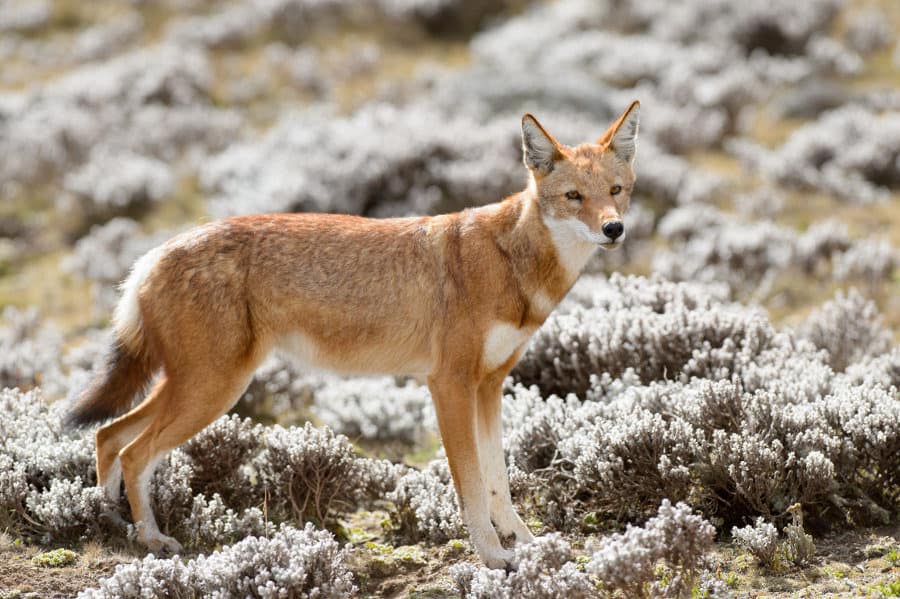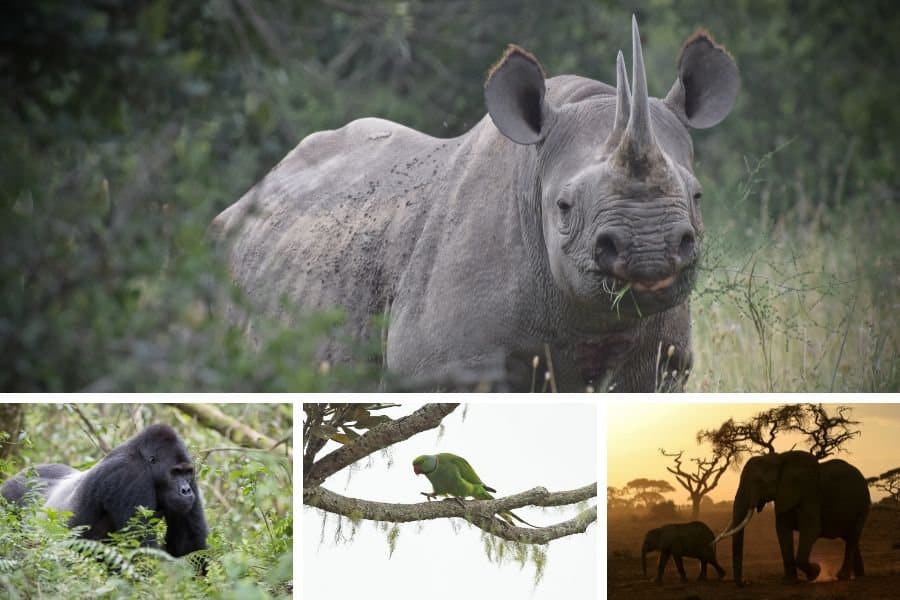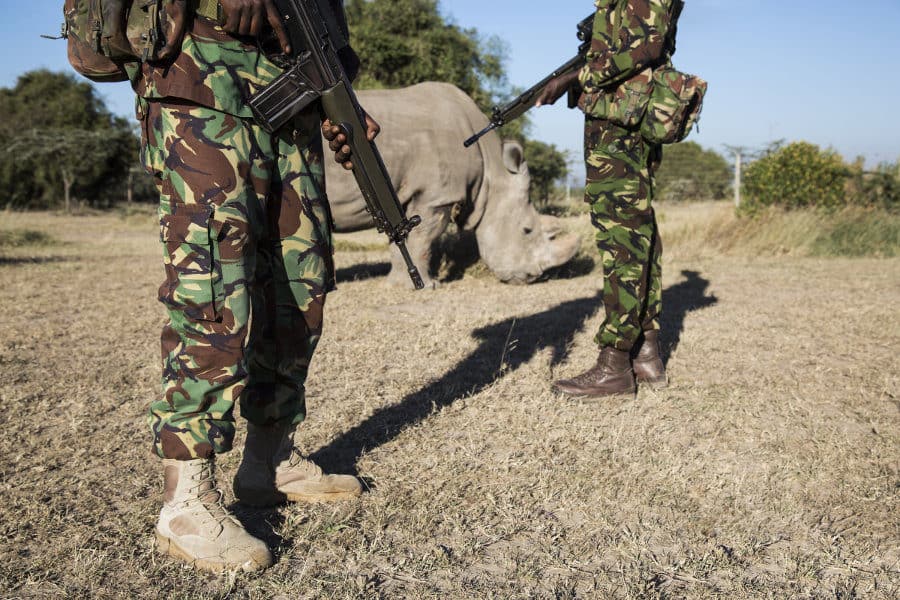The Ethiopian wolf is one of the rarest carnivores on the planet.
Less than 500 remain of this critically endangered species. So let’s celebrate this beautiful African predator and proud member of the wolf fraternity.
This article will immerse you in the world of the Ethiopian wolf and help you understand how we can secure its future.
Ethiopian Wolves – Looks Can Be Deceiving
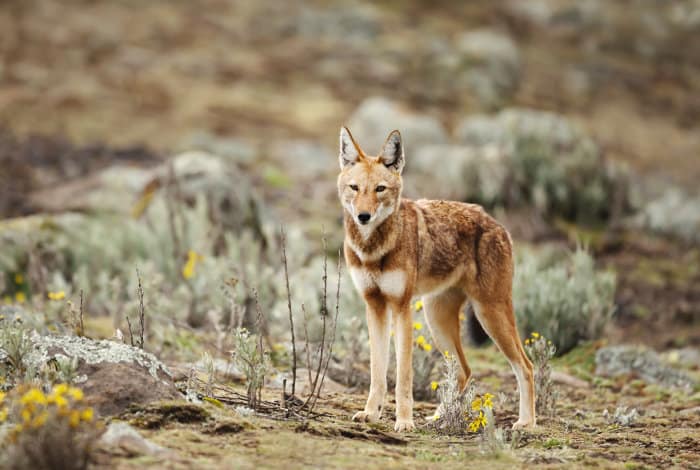
At first glance, the Ethiopian wolf appears to resemble the image we may have of the common fox, rather than the growling, snarling wolves we’ve been exposed to on wildlife shows and Disney animations.
Alternatively known as the Simien Fox, the Ethiopian wolf looks like a fox from the neck up. This African wolf is the ancestor of the American coyote. From the neck down (or across) the coyote seems to have borrowed its body size, shape and stature from the Ethiopian wolf.
With a long, narrow face, sporting an elongated snout and an unassuming, almost gentle expression, it’s hard to label this creature a predator deserving of any awe or apprehension on behalf of its prey.
Nimble, dainty legs and an orangey-red coat are complemented by the trademark white underbelly of the foxes found in quaint English countryside hamlets.
The Ethiopian wolf wouldn’t seem out of place rooting and clattering through inner-city bins in search of a midnight snack or a discarded chicken leg. At first glance it is not quite a source of danger, more a nuisance.
However, this would be a great disservice to a species that has been refining the art of hunting for thousands of years. And, an animal that now only exists in a tiny part of Africa.
An adaptable African predator
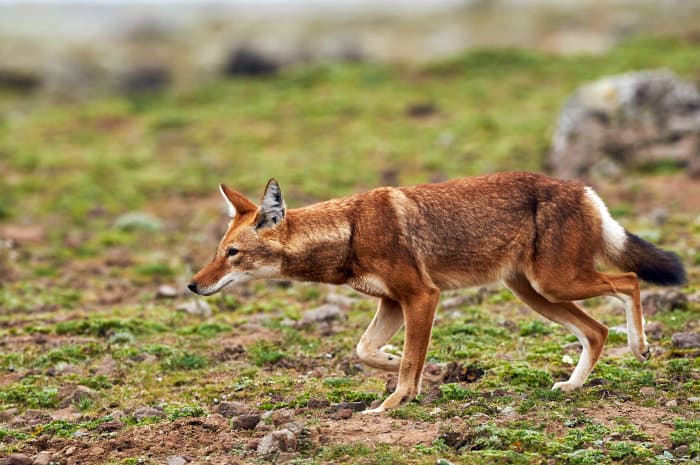
Though it may not rank highly on a list of visibly imposing or intimidating predators, the Ethiopian wolf is as consummate a hunter as you’re likely to discover in Africa.
It lives throughout the Ethiopian highlands, primarily in the Bale Mountains in the southeastern part of the country. A shortage of readily available larger prey have forced these pack-protecting creatures to rethink their whole plan of attack when it comes to feeding time.
The gypsy of the Ethiopian Highlands, like its wolf ancestors, adheres to a life of loyal collectivism, running and sleeping in groups. However, the stereotypical view of the wolf as a sly hunter is strongly challenged by the Ethiopian wolf.
Having previously relied on the collaborative cooperation of the pack to trace, track and take down larger, meatier mammals, the Ethiopian wolf has had to think on its furry feet. This, along with a scarcity of large prey, has led the wolf to become more open-minded and creative in its pursuit of food.
As a harsh reality of life in the unforgiving wilds of the Ethiopian Highlands, a ‘needs must’ mentality has been adopted as the Ethiopian wolf has evolved to keep hunger and starvation away.
A subsistence diet of grass rats
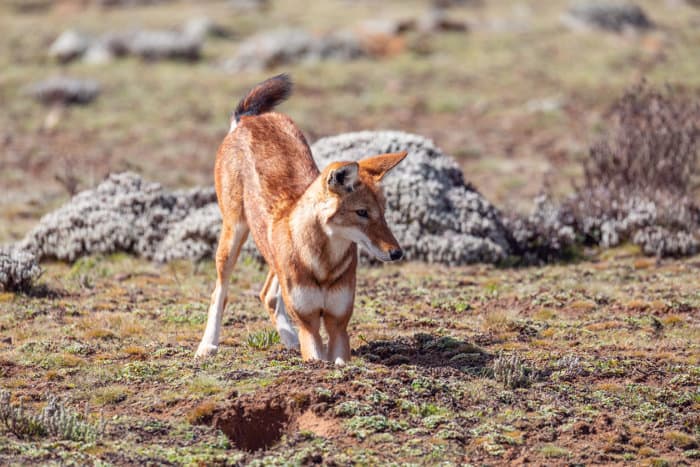
In the past, the Ethiopian wolf dined upon larger quarry but numbers have dwindled in recent times. It satisfies itself with the snaring of some of the local resident rodents, particularly the rats of which there are literally thousands living within a one kilometre radius.
The Ethiopian wolf contents itself with catching even the most minute of four-legged foe. Grass rats that infest the Highland burrows and ditches in their hundreds of thousands have become a staple food.
Thanks to the tempting proximity of the rats that scurry and squeal on the wolves’ doorstep, the sustenance demanded by their young can be provided at a premium of effort and energy.
With ears that can hear a pin drop and a long snout that has evolved to fit into the most compact of spaces, the rats don’t stand a chance against the Ethiopian wolf.
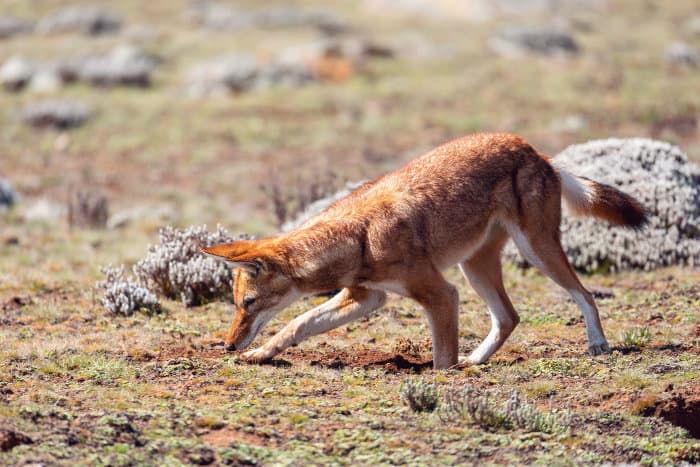
Having located a rat’s hole, the wolves rear up onto deceptively powerful hind legs and crash down, snout-first, essentially spearing the tiny frail rat bodies. The lifeless remains are mercilessly dragged out into the open and the broken bodies are transported back to their young.
Though, as with most things, low risk brings low reward and these grass rats are nothing more than basic hors d’oeuvres.
Although plentiful and caught with considerable ease, the unsubstantial amount of meat that the rats offer means that there’s an unending need to hunt them from the rising to the setting of the Ethiopian sun.
This repetitive, ongoing activity can drain the Ethiopian wolf of vital energy and encouragement, leading it to consider more attractive alternatives.
Larger prey hunted by the Ethiopian wolf
Always on the lookout for more robust representatives of the rat species, the big-headed mole rat is an especially welcome dish. Its superior size and sumptuous bulk make the extra time and concentration needed to catch it a worthwhile pursuit.
A highly cautious and paranoid creature, the big-headed mole rat scours the immediate area within its burrow for anything to eat and can be seen with its head above ground for a mere 20 minutes per day.
This means that any concerted effort to corner these cagey critters requires a significant chunk of the Ethiopian wolf’s time and attention.
The hunter must be patient and vigilant in readiness to pounce within the relatively tight window of opportunity. Having spotted the head of a big-headed mole rat, the Ethiopian wolf will approach in short sharp bursts, utilising its sinewy strong legs to stay low to the ground.
Intermittently pausing and freezing to ensure it isn’t detected on its deadly approach, it will lie prone within touching distance for as long as is deemed necessary. Then, it makes a final darting dash to engulf its unsuspecting quarry and squeeze the life out of this podgy prey with its razor sharp fangs.
Why is the Ethiopian Wolf So Endangered?

The causes of the Ethiopian Wolf’s current state of emergency are greatly diverse and varied. Threats to its overall survival are less predictable than you might think.
Human encroachment and habitat loss
In a country that boasts the world’s fastest growing population of humans – Ethiopia – this animal is cited on the IUCN red list of endangered species as a direct result of human encroachment.
In the past, the high altitude natural habitat of the Ethiopian wolf ensured that it was protected from human invasion. However, unprecedented rises in the national population have forced some communities to push the boundaries of agricultural capability.
Farms growing crops such as potatoes have been installed and run as high as 4000 m above sea level, proving that agriculture can flourish and thrive in areas previously considered to be non-conducive.
With the added benefits of clean air and regular rainfall, these mountainside locales are becoming more and more accessible and sought after.
This has pinned back the land mass available to the Ethiopian wolf. An environment that was once exclusively enjoyed by the animal kingdom, free from human influence or control, is being turned to farmland.
Diseases spread by domestic dogs

Being highly susceptible to a whole host of pathogens transmitted from their cousins – the domestic dogs – a significant number of Ethiopian wolves contract diseases such as rabies. In such cases, fatalities are almost always the unavoidable result.
Inevitably for the few remaining Ethiopian wolves, a closer proximity to human settlers will lead to more possible points of contact with the dogs that follow in tow.
Sooner or later, this trend of the dogs existing side by side with the wolves could lead to a more prevalent spread of the ailments and infections that they are carrying.
Climate change
As the climate of the planet continues to change, Ethiopia is in no way immune to its effects.
The cold alpine tundra on which the Ethiopian wolf has depended for its very survival is gradually but noticeably vanishing. Rising temperatures throughout the African continent are having detrimental effects on the environment. In turn, the Ethiopian Highlands are being relentlessly worn away.
Saving the Ethiopian Wolf
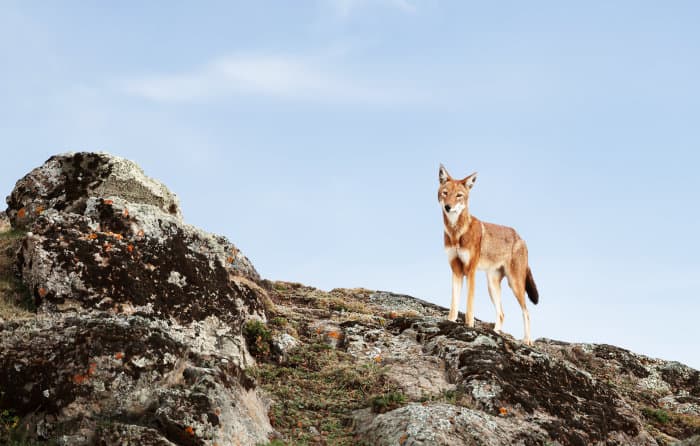
Research over the last 30 years has shown that this isn’t the first time that the Ethiopian wolf has flirted with extinction. Its total number is very sensitive to upturns and downturns. Nevertheless, it’s clear that the time for talking is nearing an end and drastic preventive action is needed if the seemingly inevitable is to be avoided.
There’s no obvious alternative habitat that could replenish and sustain this species of Ethiopian wolf, which hovers so close to absolute oblivion.
The Ethiopian wolf is precariously positioned and very close to extinction.
But don’t despair. There are genuine efforts underway on behalf of local organizations and conservation groups.
So hopefully this magnificent predator will survive and not fade into mountain-dwelling memory.
